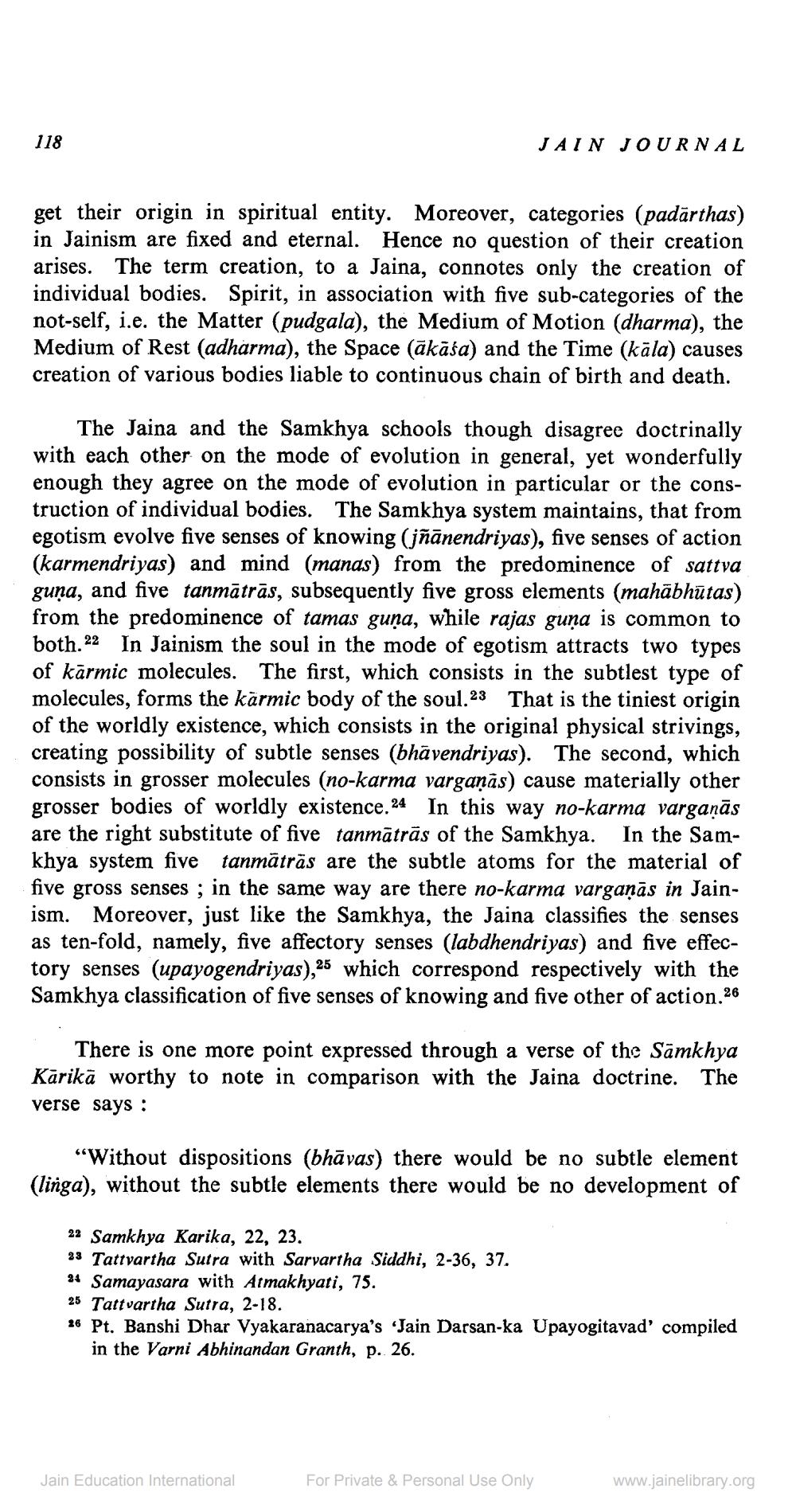________________
118
JAIN JOURNAL
get their origin in spiritual entity. Moreover, categories (padārthas) in Jainism are fixed and eternal. Hence no question of their creation arises. The term creation, to a Jaina, connotes only the creation of individual bodies. Spirit, in association with five sub-categories of the not-self, i.e. the Matter (pudgala), the Medium of Motion (dharma), the Medium of Rest (adharma), the Space (ākāśa) and the Time (kāla) causes creation of various bodies liable to continuous chain of birth and death.
The Jaina and the Samkhya schools though disagree doctrinally with each other on the mode of evolution in general, yet wonderfully enough they agree on the mode of evolution in particular or the construction of individual bodies. The Samkhya system maintains, that from egotism evolve five senses of knowing (jñānendriyas), five senses of action (karmendriyas) and mind (manas) from the predominence of sattva guņa, and five tanmātrās, subsequently five gross elements (mahābhūtas) from the predominence of tamas guņa, while rajas guna is common to both.22 In Jainism the soul in the mode of egotism attracts two types of kārmic molecules. The first, which consists in the subtlest type of molecules, forms the karmic body of the soul.23 That is the tiniest origin of the worldly existence, which consists in the original physical strivings, creating possibility of subtle senses (bhāvendriyas). The second, which consists in grosser molecules (no-karma vargaņās) cause materially other grosser bodies of worldly existence.24 In this way no-karma varganās are the right substitute of five tanmātrās of the Samkhya. In the Samkhya system five tanmātrās are the subtle atoms for the material of five gross senses ; in the same way are there no-karma vargaņās in Jainism. Moreover, just like the Samkhya, the Jaina classifies the senses as ten-fold, namely, five affectory senses (labdhendriyas) and five effectory senses (upayogendriyas),25 which correspond respectively with the Samkhya classification of five senses of knowing and five other of action.26
There is one more point expressed through a verse of the Sāmkhya Karikā worthy to note in comparison with the Jaina doctrine. The verse says :
“Without dispositions (bhāvas) there would be no subtle element (linga), without the subtle elements there would be no development of
22 Samkhya Karika, 22, 23. 33 Tattvartha Sutra with Sarvartha Siddhi, 2-36, 37. 24 Samayasara with Atmakhyati, 75. 25 Tattvartha Sutra, 2-18. 26 Pt. Banshi Dhar Vyakaranacarya's Jain Darsan-ka Upayogitavad' compiled
in the Varni Abhinandan Granth, p. 26.
Jain Education International
For Private & Personal Use Only
www.jainelibrary.org




